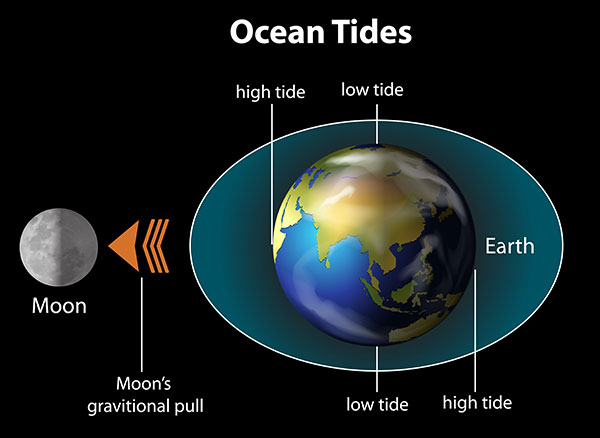Review It
In the beginning of this module, we identified the organizational pattern of the article Dance of the Tides as cause and effect. As you read the article, you were able to analyze the relationship between key ideas and details by thinking about them using a cause-and-effect framework.
The author begins the article by explaining how tides affect wave height. He goes on to explain how tide cycles follow the phases of the moon. As the article progresses, the author delves deeper into the concept of how the earth and moon’s gravitational pull affect the acceleration of the earth and moon toward each other. The author provides background information on the science behind the moon’s effect on the tides. Each paragraph in the article builds on the next by providing more details and explanations about what causes tides.

The moon’s gravitational pull causes two high tides at the same time on opposite sides of the earth.
The following chart summarizes the cause-and-effect relationships that the author uses in the sections of the article that you have explored so far:
The moon's gravitational pull creates tides.
Cause: Moon's gravitational pull on earth
Effect: High and low tides
Tides follow the phases of the moon.
Cause: Waxiing and waning of the moon
Effect: Rising and falling of tides
Tides affect waves.
Cause: High tides
Effect: Deep water for good surfing waves
Asking questions to determine the relationship among key ideas and details will broaden your understanding of complex concepts in a text. Recognizing text structure will guide you as you uncover meaning in a text.
Here are a few questions to keep in mind as you analyze text structure to uncover meaning in a text:
As you analyze ideas and details, ask yourself:
- How does this information support the purpose or structure of the text?
- What relationship does this detail have to previous information?
- Does it expand an idea, provide a reason for something occurring, or give examples?
- Why did the author include this information?
- How does this information help me better understand the text?
Go to the following page to test your ability at analyzing text structure by continuing to examine the relationship between key ideas and details in the text.


